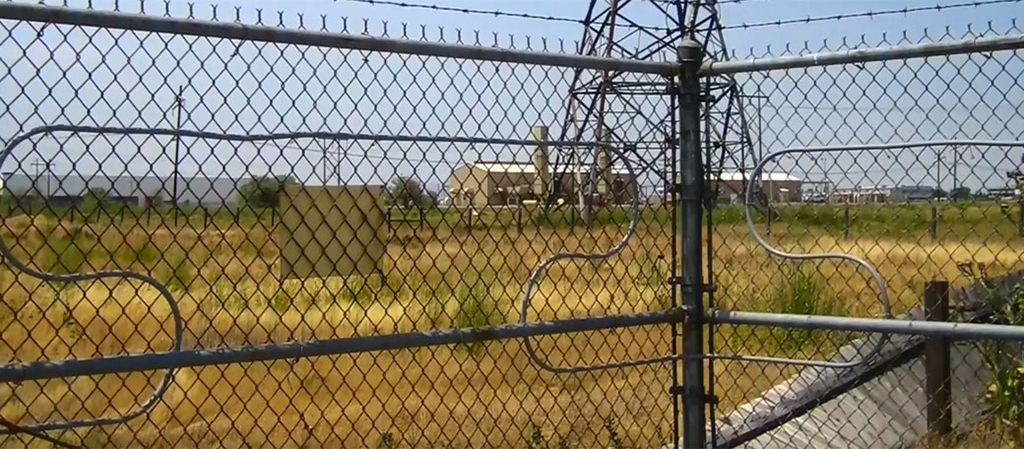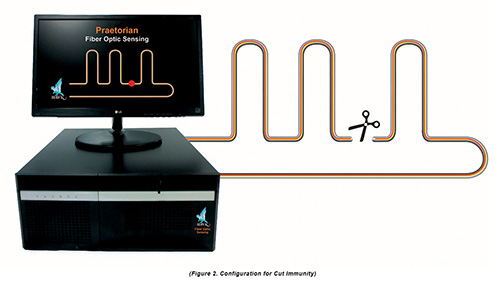Key Aspects of Fiber Optics Infrastructure for Security Installations You Need to Know
Key Aspects of Fiber Optics Infrastructure for Security Installations You Need to Know
Blog Article
The Ultimate Overview to Fiber Optic Safety Equipments for Your Business
In a period where safety and security worries are vital for businesses, recognizing the complexities of fiber optic modern technology can be transformative. This guide describes how incorporating fiber optic security systems not only improves data protection but likewise uses benefits like resistance to interference and real-time tracking abilities. As companies review their safety needs, it becomes critical to consider the installation procedure and the current advancements in the area. What particular elements should be focused on when picking the right system, and just how can organizations guarantee they make one of the most enlightened options?
Understanding Fiber Optic Innovation

The core of a fiber optic wire is composed of a slim glass or plastic center, bordered by a cladding layer that mirrors light back into the core. Single-mode fibers are designed for long-distance transmission, while multi-mode fibers are suitable for shorter ranges, typically used within buildings.
Optical fiber are not only faster but also more secure than conventional circuitry. Their intrinsic resistance to electromagnetic disturbance and the trouble of taking advantage of the signal without detection make them a favored option for organizations prioritizing information stability and safety and security. As organizations increasingly rely on safe and effective interaction systems, comprehending fiber optic technology becomes crucial for notified decision-making.
Key Advantages of Fiber Optic Safety
When considering safety options for a service, the benefits of fiber optic systems are specifically engaging. Primarily, fiber optic innovation uses extraordinary information transmission rates and bandwidth ability, making it excellent for managing high-resolution video clip feeds from surveillance cameras. This capacity guarantees that protection workers get real-time information, boosting overall action times to possible safety risks.
Moreover, fiber optic cords are naturally immune to electro-magnetic interference, which can jeopardize the honesty of traditional copper-based systems. This resistance makes certain that the data sent remains protected and uninterrupted, giving an extra trusted safety infrastructure. Furthermore, optical fiber are less prone to physical damages, as they are made from glass as opposed to steel, minimizing maintenance costs and downtime.
Another significant benefit is the raised scalability of fiber optic systems. As business requirements develop, fiber networks can be conveniently expanded to fit additional safety and security gadgets without considerable overhauls to the existing framework. Fiber optic systems offer boosted cybersecurity functions, including file encryption capabilities that protect sensitive information from unapproved gain access to. Collectively, these benefits make fiber optic security systems a robust option for organizations looking for to boost their safety procedures.
Installation Refine and Considerations
Thinking about the intricacies entailed, the setup process of fiber optic protection systems requires cautious planning and execution. The initial action entails a comprehensive site look at this website evaluation to determine optimal places for cabling and tools. This assessment needs to consider environmental elements, existing infrastructure, and potential vulnerabilities.

Additionally, the installation has to abide by regional building codes and industry standards. This may include coordinating with numerous stakeholders such as building managers, IT groups, and protection personnel to ensure smooth assimilation with existing systems.
Post-installation, extensive testing is necessary to verify system performance and identify any type of issues that may emerge. By focusing on these factors to consider during the installation process, companies can make sure a durable and reliable fiber optic security system that meets their particular security demands.
Most Current Technologies in Fiber Optic Safety And Security
Current advancements in fiber optic modern technology have actually considerably improved the abilities of protection systems for businesses. One of the most noteworthy technologies is the assimilation of fiber optic sensing units that can spot resonances and invasions along the border of a facility. These sensing units give real-time surveillance, making it possible for quick reaction to potential breaches.
In addition, the advancement of distributed fiber optic sensing innovation permits the continual tracking of huge locations with a solitary fiber cord. This method not only decreases installation costs however likewise enhances the reliability of monitoring systems by eliminating the click here to find out more requirement for numerous, different sensors.
Additionally, advancements in multiplexing strategies have made it possible for companies to transmit substantial amounts of data over fiber optic networks, improving the capabilities of video clip monitoring systems. High-def video clip feeds can now be sent out over fars away without loss of high quality, making sure that protection employees have accessibility to clear and actionable information.
Last but not least, making use of expert system (AI) together with fiber optic systems is revolutionizing risk detection. AI formulas can examine information from fiber optic networks to recognize uncommon patterns or behaviors, permitting aggressive protection measures. These advancements collectively stand for a significant jump forward in fiber optic protection modern technology.
Choosing the Right System for Your Service
Choosing the ideal fiber optic security system for your business is vital for making sure ideal protection and satisfaction. To make an educated choice, analyze your particular protection requirements, taking into consideration variables such as the dimension of your premises, the nature of your procedures, and prospective vulnerabilities.
Begin by reviewing the level of safety needed; for example, high-risk settings may necessitate innovative systems with incorporated surveillance and breach discovery abilities. Next, take into consideration scalability; as your business expands, your safety and security system should be qualified of broadening to suit increased demands without considerable overhauls.
Additionally, investigate the integrity and performance of different systems. Seek carriers with recognized online reputations and client testimonials that vouch for their service high quality. It's likewise suggested to ask about the innovation's compatibility with existing facilities, ensuring a seamless assimilation procedure.
Final Thought
Finally, fiber optic safety and security systems present a robust option for enhancing organization security facilities. The integration of high-speed data transmission, resistance to electromagnetic interference, and progressed tracking abilities considerably boosts general defense (fiber optic security system). By recognizing the innovation, acknowledging its benefits, and thinking about the setup procedure, organizations can make educated choices. The most recent technologies additionally bolster the efficiency of these systems, ensuring that services continue to be protected and adaptable in an ever-evolving threat landscape.
Report this page